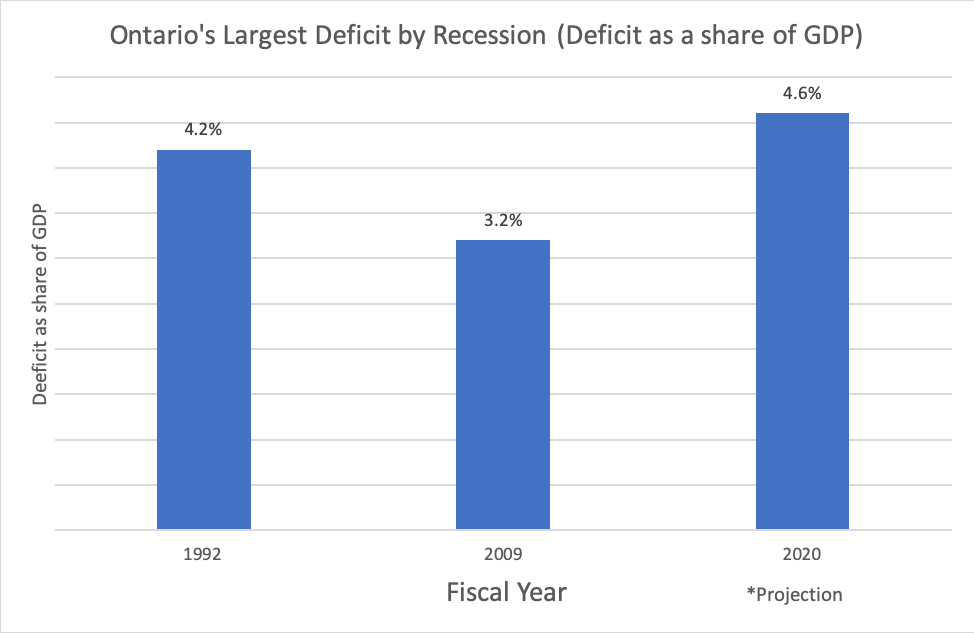Ontario budget deficit will reach historic levels

The Ford government on Wednesday released Ontario’s first quarter finances. The headline statistic was the updated estimate of Ontario’s operating budget deficit this year, now pegged at $38.5 billion, up from approximately $20 billion estimated in the March budget.
Because this is such an unfathomably large number, it’s helpful to provide some context to make it understandable.
First, this deficit number means that Ontario’s provincial government operating deficit will be approximately $2,600 per person. This means the province will spend approximately $2,600 more on day-to-day operating expenditures than it will collect in revenue for every man, woman and child in the province. And this figure excludes new debt from spending on capital projects such as infrastructure.
This $2,600 per person in additional debt will be tossed on the top of a mountain of debt Ontario was already carrying. In 2019/20, Ontario’s per-person debt was approximately $24,380 per person. So this year we can expect that figure to increase to about $26,800.
That’s a 9.8 per cent increase to Ontario’s already worrying per-person government debt load in just one year.
Another way to make this year’s deficit understandable is to provide some historical context. For example, this year’s deficit will now be the largest in provincial history (relative to the size of the provincial economy).
Following the last recession in the early 2010s, Ontario’s largest budget deficit was 3.2 per cent as big as the entire provincial economy. That’s a substantial figure, but the deficit was even larger in the 1990s under then-premier Bob Rae, when the deficit topped out at 4.2 per cent of the size of Ontario’s economy.
This year, the deficit will be even bigger. The fiscal update shows that at $38.5 billion, Ontario’s deficit this year will be 4.6 per cent larger than Ontario’s entire economy. In other words, as the chart below shows, the deficit this year will be larger than it was during the worst deficit years of any government run by Bob Rae, Dalton McGuinty or Kathleen Wynne.

The purpose of providing this historical context is not to assign blame. The COVID recession has rocked Ontario’s economy causing revenues to fall, while necessitating some emergency spending (on public health, for example).
Instead, we simply want to underscore the scale of the fiscal challenge now facing the Ford government. In the 1990s and 2010s, the large deficits described above preceded a long period of deficits and debt accumulation as various governments struggled to balance their books. Again, now Premier Ford faces an even larger deficit than his predecessors.
Ontario faces substantial fiscal challenges. Wednesday’s fiscal update shows that things are getting much worse—quickly. The province’s deficit has climbed to approximately $2,600 per person this year, and relative to the size of its economy the deficit will be larger this year than at any point during the Rae, McGuinty and Wynne years. Clearly, the Ford government has its work cut out in the years ahead if it wishes to avoid the rapid debt accumulation that occurred under its predecessors.
Author:
Subscribe to the Fraser Institute
Get the latest news from the Fraser Institute on the latest research studies, news and events.

